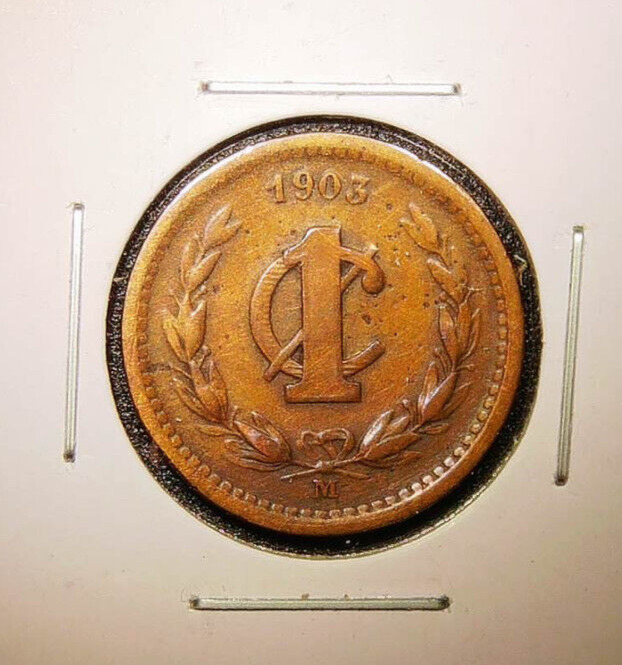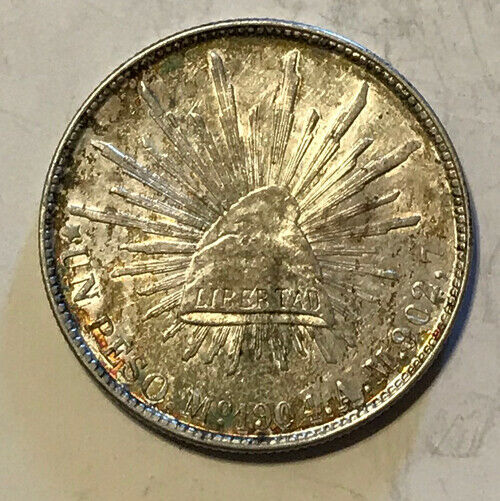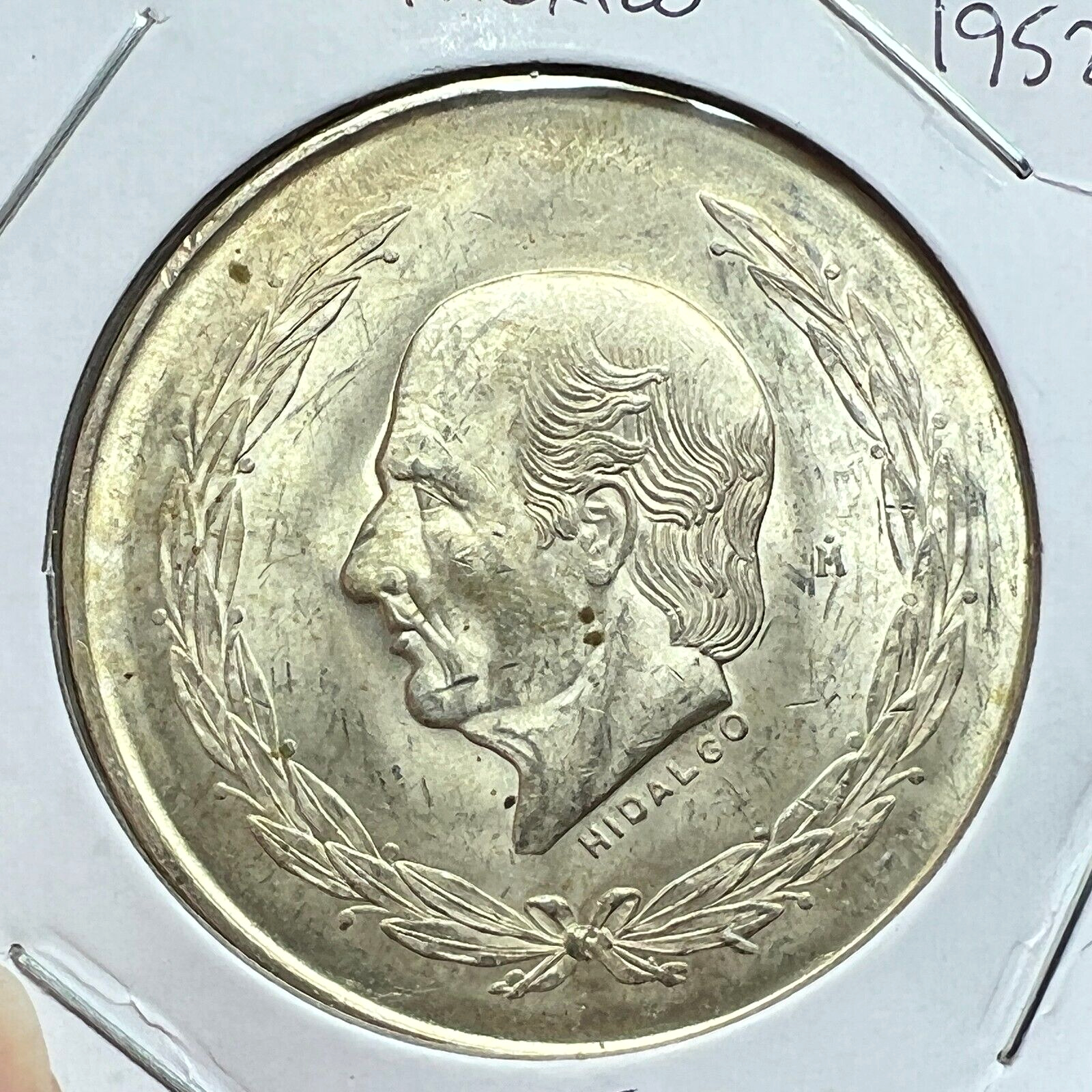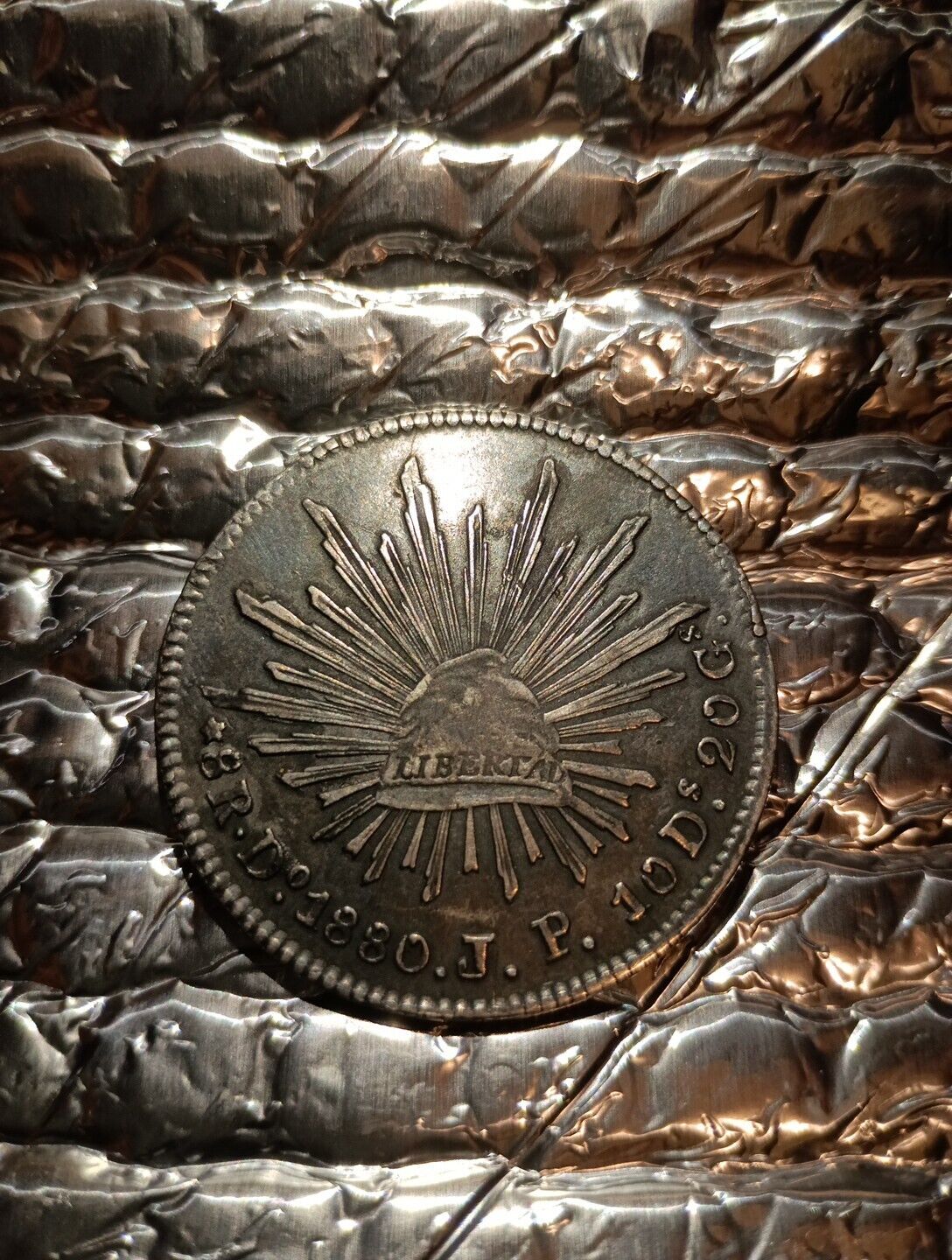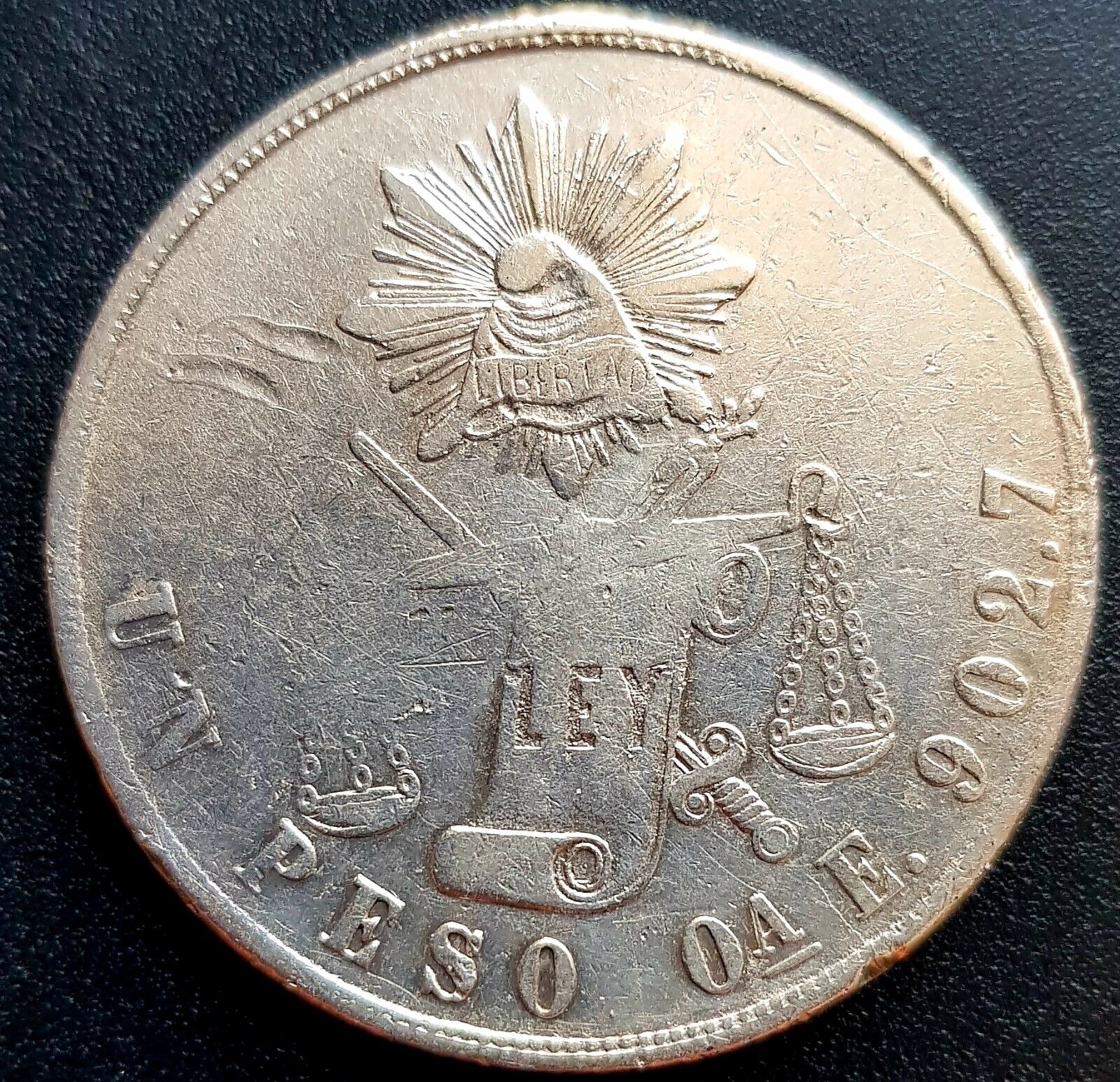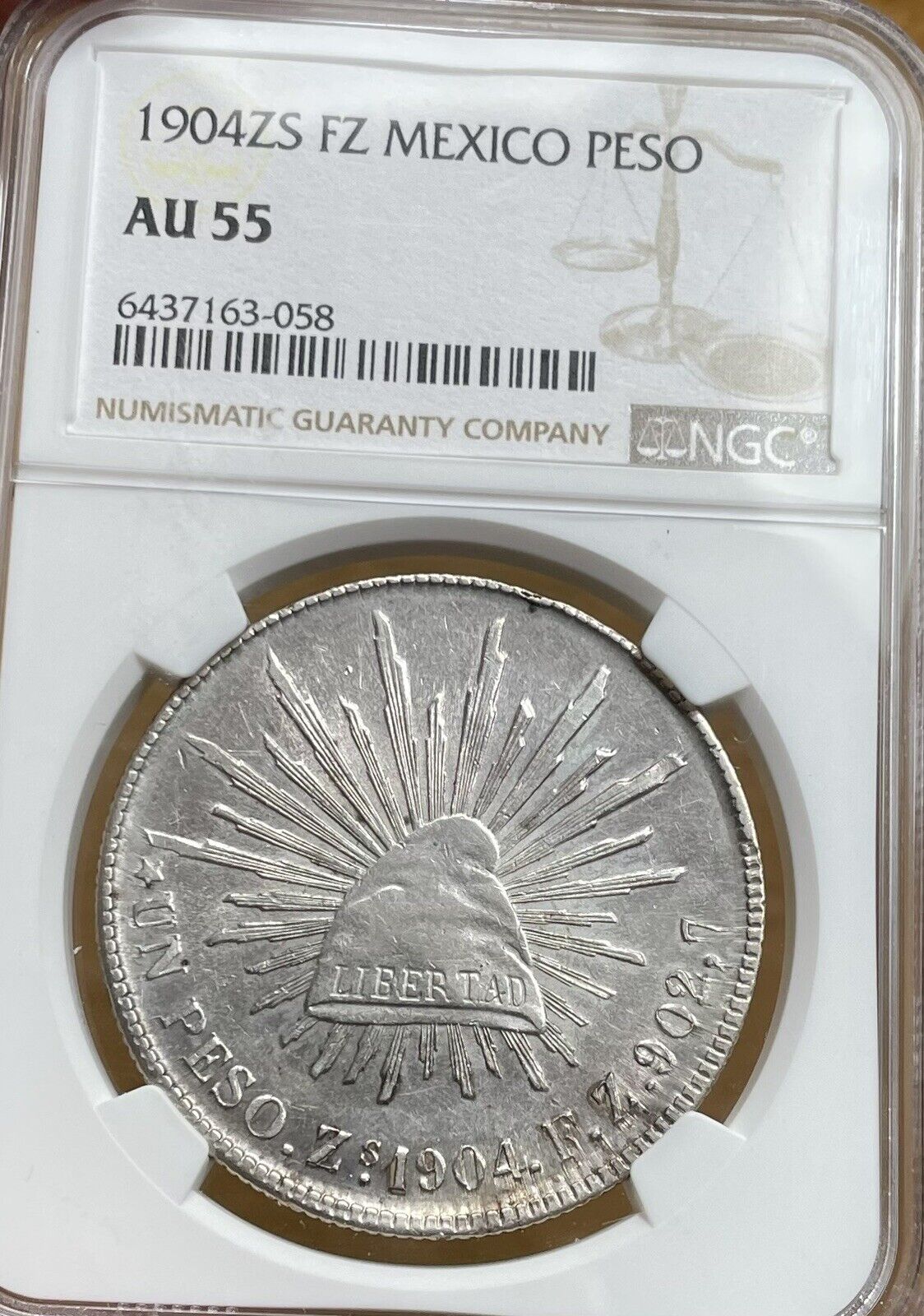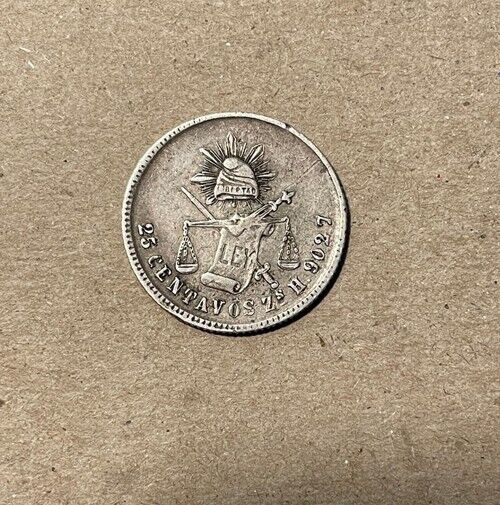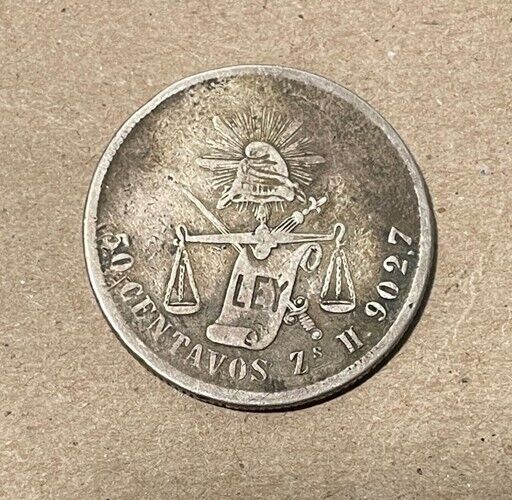-40%
1885PiH MEXCAN REVOLUTION 25CENTAVOS SAN LUIS POTOSI MEXICO RARE SILVER COIN 43K
$ 89.76
- Description
- Size Guide
Description
1885PiH MEXCAN REVOLUTION 25CENTAVOS SAN LUIS POTOSI MEXICO RARE SILVER COIN 43KDescription
GREETINGS, FEEL FREE
TO
"SHOP NAKED."
©
We deal in items we believe others will enjoy and want to purchase.
We are not experts.
We welcome any comments, questions, or concerns.
WE ARE TARGETING A GLOBAL MARKET PLACE.
Thanks in advance for your patronage.
Please Be sure to add WDG to your
favorites list
!
NOW FOR YOUR VIEWING PLEASURE…
1885 PiH
SAN LUIS POTOSI
OLD TWENTY-FIVE CENTAVOS
REPUBLICA MEXICANA
SECOND REPUBLIC ERA
KM# 406.8
.903 SILVER
43,000 MINTAGE
DOUBLE DIE or OVERDATE VARIETY
ALMOST ULTRA RARE
CIRCULATED / with WEAR
----------------------------------------------
FYI
The history of Mexico, a country located in the southern portion of North America, covers a period of more than three millennia. First populated more than 13,000 years ago, the territory had complex indigenous civilizations before being conquered by the Spanish in the 16th century.
From 1519, the Spaniards absorbed the native peoples into Spain's vast colonial empire, and fused Mexico's long-established Mesoamerican civilizations with European culture. Perhaps nothing better represents this hybrid background than Mexico's languages: the country is both the most populous Spanish-speaking country in the world and home to the largest number of Native American language speakers in North America. For three centuries Mexico was part of the Spanish Empire, whose legacy is a country with a Spanish-speaking, Catholic and largely Western culture.
After a protracted struggle (1810-1821) Mexico declared its independence from Spain in 1821 via the Treaty of Córdoba. A brief period of monarchy (1821–23), called the First Mexican Empire, was followed by the founding of the Republic of Mexico, established under a federal constitution in 1824. Mexico continues to be constituted as a federated republic.
The period of the late 1820s to the early 1850s was dominated by criollo military man turned president Antonio López de Santa Anna. In 1846, the Mexican American War was provoked by the United States, ending two years later with Mexico ceding almost half of its territory via treaty to the United States. Even though Santa Anna bore significant responsibility for the disastrous defeat, he returned to office. He was overthrown by Mexican liberals, ushering in the period of the La Reforma or Liberal Reform. The Constitution of 1857 codified the principles of liberalism in law, especially separation of church and state, equality before the law, that included stripping corporate entities (the Catholic Church and indigenous communities) of special status. The Reform sparked a civil war between liberals defending the constitution and conservatives, who opposed it. The War of the Reform saw the defeat of the conservatives on the battlefield, but conservatives remained strong and took the opportunity to invite foreign intervention against the liberals in order to forward their own cause.
France invaded Mexico (1861), nominally to collect on defaulted loans to the liberal government of Benito Juárez, but it went further and at the invitation of Mexican conservatives seeking to restore monarchy in Mexico set Maximilian I on the Mexican throne. The US was engaged in its own Civil War (1861–65), so did not attempt to block the foreign intervention. Abraham Lincoln consistently supported the Mexican liberals. At the end of the civil war in the US and the triumph of the Union forces, the US actively aided Mexican liberals against Maximilian's regime. France withdrew its support of Maximilian in 1867 and his monarchist rule collapsed in 1867 and Maximilian executed.
With the end of the Second Mexican Empire, the period often called the Restored Republic (1867-1876) brought back Benito Juárez as president. Following his death from a heart attack, Sebastian Lerdo de Tejada succeed him. He was overthrown by liberal military man Porfirio Diaz, who after consolidating power ushered in a period of stability and economic growth. The half-century of economic stagnation and political chaos following independence ended.
Porfirio Díaz held power from 1876-1911, promoting "order and progress" that saw the modernization of the economy and the flow of foreign investment to the country. The period is generally called the Porfiriato, which ended with the outbreak of the Mexican Revolution. Under Díaz, Mexico's industry and infrastructure was modernized by a strong, stable but autocratic central government. Increased tax revenues and better administration brought dramatic improvements in public safety, public health, railways, mining, industry, foreign trade, and national finances.
Although little had been done for the nation's poor, the sparking forces of the Mexican Revolution were elites outside Díaz's inner circle, such as Francisco Madero, a member of one of the richest land owning families in Mexico, plus liberal intellectuals, and industrial labor activists. The fraudulent election of 1910 keeping 80 year old Díaz in power brought opposition elements together, unleashing a 10 year civil war known as the Mexican Revolution (1910–1920). The conflict was not a unified one, but took place mainly in Mexico's north with organized armies of movement under leaders such as Pancho Villa and Alvaro Obregón and in the center of Mexico, particularly the state of Morelos with guerrilla peasants fighting under the leadership of Emiliano Zapata. The war killed a tenth of the nation's population and drove many northern Mexicans across the U.S. border to escape the fighting. The Revolution ended the system of large landed estates, or haciendas that had originated with the Spanish Conquest.
Following the formation in 1929 of the precursor to the center-left Partido Revolucionario Institucional (PRI), this single party controlled national and state politics after 1929, and nationalized the oil industry in the 1930s. Following World War II, where Mexico had been a strong ally of the United States and had benefited significantly by supplying metals to build war materiel as well as guest farm workers, who freed U.S. American men to fight in the two front war. Mexico emerged from World War II with wealth and political stability and unleashed a major period of economic growth, often called the Mexican Miracle. It was organized around the principles of import substitution industrialization, with the creation of many state-owned industrial enterprises. The population grew rapidly and became more urbanized while many others moved to the United States. Mexico's economy was further integrated with the U.S. after the NAFTA agreement began lowering trade barriers in 1994. Seven decades of PRI rule ended in the year 2000 with the election of Vicente Fox of the Partido Acción Nacional (PAN). In the face of extremely violent drug wars, the PRI returned to power in 2012, promising that it had reformed itself.
----------------
San Luis Potosí (About this sound ˈsan ˈlwis potoˈsi (help·info)), officially Free and Sovereign State of San Luis Potosí (Spanish: Estado Libre y Soberano de San Luis Potosí, literally: St. Louis Potosi), is one of the 31 states which, with the Federal District, comprise the 32 Federal Entities of Mexico. It is divided in 58 municipalities and its capital city is San Luis Potosí.
It is located in North-Central Mexico. It is bordered by 9 other Mexican states, making it the state with the most borders with other neighboring states. To the north it borders the states of Nuevo León and Coahuila, to the northeast with Tamaulipas, to the east Veracruz, to the south Hidalgo, Querétaro, Jalisco and Guanajuato and Zacatecas to the northwest.
In addition to the capital city, the state's largest cities include Ciudad Valles, Matehuala, Rioverde, and Tamazunchale.
The State was given the name "San Luis Rey", King Saint Louis, in honor of Louis IX of France, and "Potosi" because the wealth of the state compared to the rich silver mines in Potosí, Bolivia. Settlers hoped of rivaling the Bolivian mine wealth, but this was never truly accomplished. In the 17th and 18th centuries, Franciscans, Augustinians, and Jesuits arrived to the area and settled, then began to build churches and buildings, many of which are still standing and have been turned into museums and universities.
In mid-1821, after the Independence of Mexico, General Jose Antonio Echavarri intimidated and threatened the Mayor and the City Council to surrender the city of San Luis to the Army of the Three Guarantees of Iturbide (Ejercito de las Tres Garantias de Iturbide), who at the time, was emperor of Mexico. They submitted to his demand, as there was no way to resist, and thus proclamation of Independence of San Luis Potosí was declared. The first Constitution of San Luis Potosí was then written on October 16, 1826, and this was in effect until 1835 when Congress proclaimed it centralist. At this point, local legislatures disappeared and state governors were appointed by the central government. This situation lasted until the promulgation of the 1857 Constitution.
The state participation in the Mexican–American War in the years of 1846-1847 gave it the name "San Luis de la Patria", Saint Louis of the Motherland, for haven contributed important leaders and ideas during the struggle with the United States. During the Reform War, state involvement was very prominent, and during the French Intervention in 1863, the city of San Luis Potosí became the capital of the country under the order of President Benito Juárez.
During the regime of Maximilian, San Luis was to become an important location. The city was held by the Imperialists until late 1866. In that year the telegraph line was opened between San Luis Potosí and Mexico City, which opened up communication lines and helped begin the industrialization of the state.
(THIS PICTURE FOR DISPLAY ONLY
)
---------------------------
Thanks for choosing this auction. You may email for alternate payment arrangements. We combine shipping. Please pay promptly after the auction. The item will be shipped upon receipt of funds. Also, INTERNATIONAL CUSTOMS is the international buyers obligation and must be aware of their own customs laws. We cannot be responsible for seized or quarantine purchases. If your shipping costs seems high, it is because we ensure that your purchase is well packed, quickly delivered, and insured to arrive safe and sound. WE ARE GOING GREEN, SO WE DO SOMETIMES USE CLEAN RECYCLED MATERIALS TO SHIP.
Please leave feedback when you have received the item and are satisfied. Please respond when you have received the item * If you were pleased with this transaction, please respond with all 5 stars! If you are not pleased, let us know via e-mail. Our goal is for 5-star service. We want you to be a satisfied, return customer.
Please express any concerns or questions. More pictures are available upon request. The winning bid will incur the cost of S/H INSURED FEDEX OR USPS. See rate calculator or email FOR ESTIMATE. International Bidders are Welcome but be mindful if your country is excluded from safe shipping.
Thanks for perusing
THIS
and
ALL
our auctions.
Please Check out our
other items
!
WE like the curious and odd.
BUY, BYE!!
Track Page Views With
Auctiva's FREE Counter






